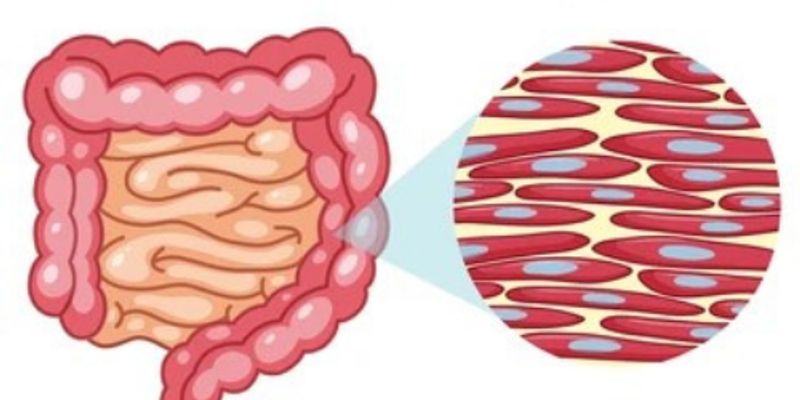Smooth muscle
The smooth muscle is an involuntary non-striated muscle, meaning it does not have repeating functional units called sarcomeres. Smooth muscle is often found in the walls of hollow organs, including the stomach, intestines, bladder, and uterus. It is also found in the walls of passageways, such as blood and lymph vessels, and in the tracts of the respiratory, urinary, and reproductive systems. Credit: Shutterstock
-
DEC 12, 2023 | 8:00 PMEmbryonic epicardium is crucial for normal heart morphogenesis. The tissue originates from the proepicardial organ, with cells migrating to form the outer mesothelial layer, giving rise to n...SEP 23, 2020 | 12:00 PMB cells and tertiary lymphoid structures (TLS) promote immunotherapy response 1:00–1:30 pm PDT Presented By: Rafet Basar, MD...Speaker: Handan Xiang, PhD , Pei-Yu Chen, PhD , Hiranmayi Ravichandran, MS , Rafet Basar, MD , Amir Horowitz, PhDPresented at: 9th Annual Fluidigm Mass Cytometry Virtual Summit
JUN 03, 2020 | 12:00 AMAlthough much is known about the molecular maternal-fetal interactions during implantation, the 3D architecture of the uterine environment in which the early embryo develops is not well unde...MAY 19, 2020 | 11:15 AMWe applied CITE-Seq to measure >150 cell surface immune markers and checkpoint proteins simultaneous to RNA-Sequencing. We resolve the tumour-immune milieu with high precision and reveal...JUN 19, 2019 | 8:00 AMDATE: June 19, 2019TIME: 8:00am PDT, 11:00am EDT Approximately 80% of all cancers are known to be affected by both somatic mutations and copy number changes. Furthermore, r...Speaker: Ravindra Kolhe, MD, PhD , Joanna Przybyl, PhDSponsored By: Thermo Fisher Scientific - Applied BiosystemsFEB 22, 2018 | 10:30 AMPreterm birth (PTB) is the leading cause of infant mortality and morbidity worldwide. Both preterm labor and neonatal injuries have been linked to inflammation. Of all mediators of inflammati...Speaker: Sylvain Chemtob, MD, PhD, FRCPC, FAAP, FCAHSPresented at: Drug Discovery Virtual Event Series 2018
SEP 28, 2017 | 9:00 AMContractile non-muscle cells, including smooth muscle and myoepithelial cells, provide the mechanical forces required for tissue homeostasis in numerous organ systems. For example, smooth mus...SEP 01, 2017 | 12:00 AMThe enteric nervous system (ENS) plays an essential role in gut motility. Diseases of the ENS result in bowel motility disorders that are some of the most challenging clinical conditions to m...MAY 10, 2017 | 9:00 AMWe have developed a semi-automated, high-throughput transient expression and purification system that yields milligram quantities of hundreds of proteins weekly. Starting from a glycerol stoc...
DEC 12, 2023 | 8:00 PM
Embryonic epicardium is crucial for normal heart morphogenesis. The tissue originates from the proepicardial organ, with cells migrating to form the outer mesothelial layer, giving rise to n...
SEP 23, 2020 | 12:00 PM
B cells and tertiary lymphoid structures (TLS) promote immunotherapy response 1:00–1:30 pm PDT Presented By: Rafet Basar, MD...
Speaker:
Handan Xiang, PhD
, Pei-Yu Chen, PhD
, Hiranmayi Ravichandran, MS
, Rafet Basar, MD
, Amir Horowitz, PhD
Presented at: 9th Annual Fluidigm Mass Cytometry Virtual Summit
JUN 03, 2020 | 12:00 AM
Although much is known about the molecular maternal-fetal interactions during implantation, the 3D architecture of the uterine environment in which the early embryo develops is not well unde...
MAY 19, 2020 | 11:15 AM
We applied CITE-Seq to measure >150 cell surface immune markers and checkpoint proteins simultaneous to RNA-Sequencing. We resolve the tumour-immune milieu with high precision and reveal...
JUN 19, 2019 | 8:00 AM
DATE: June 19, 2019TIME: 8:00am PDT, 11:00am EDT Approximately 80% of all cancers are known to be affected by both somatic mutations and copy number changes. Furthermore, r...
Speaker:
Ravindra Kolhe, MD, PhD
, Joanna Przybyl, PhD
Sponsored By: Thermo Fisher Scientific - Applied Biosystems
FEB 22, 2018 | 10:30 AM
Preterm birth (PTB) is the leading cause of infant mortality and morbidity worldwide. Both preterm labor and neonatal injuries have been linked to inflammation. Of all mediators of inflammati...
Speaker:
Sylvain Chemtob, MD, PhD, FRCPC, FAAP, FCAHS
Presented at: Drug Discovery Virtual Event Series 2018
SEP 28, 2017 | 9:00 AM
Contractile non-muscle cells, including smooth muscle and myoepithelial cells, provide the mechanical forces required for tissue homeostasis in numerous organ systems. For example, smooth mus...
SEP 01, 2017 | 12:00 AM
The enteric nervous system (ENS) plays an essential role in gut motility. Diseases of the ENS result in bowel motility disorders that are some of the most challenging clinical conditions to m...
MAY 10, 2017 | 9:00 AM
We have developed a semi-automated, high-throughput transient expression and purification system that yields milligram quantities of hundreds of proteins weekly. Starting from a glycerol stoc...









